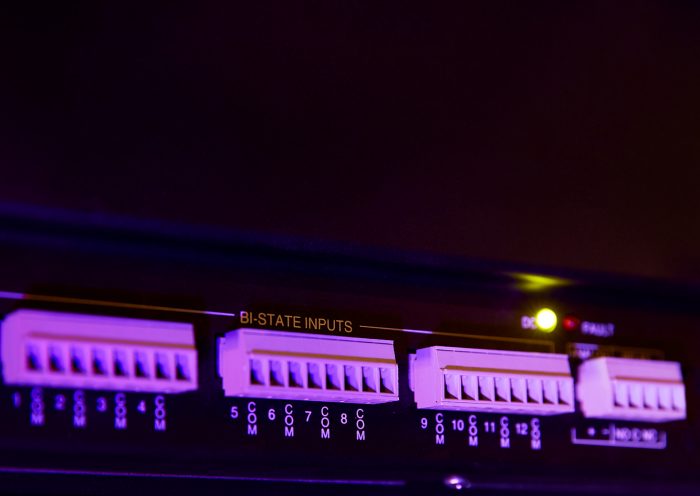

Enduring success in business is becoming harder to maintain. Companies don’t always adapt to market and technological changes quickly enough, and a global economy means the impact of economic shocks, natural disasters, and public health emergencies—like the coronavirus pandemic—are widespread. Services normally taken for granted suddenly become essential for businesses to operate, employees to work, and for a country’s economic survival.
Organisations that manage complex networks of critical assets, such as telcos, towercos, and utilities understand better than most how essential it is that business-critical operations can recover and adapt quickly because for them, the cost of downtime, data breaches, and poor service are significant. For society, the services provided by these companies are also becoming more and more a necessary and fundamental part of daily life.
In this context, building operational resilience is paramount. How you manage and invest in your network matters, but operational resilience also requires embedding greater agility and better decision-making into daily workflows.
While resilience is more commonly understood as an attribute that individuals develop: the ability to cope with, and bounce back from, hardships. At the organisational level, it’s about being able to evolve as business conditions change or shift dramatically.
Resilience has become more critical as business conditions have become more volatile.
Resilient organisations are better able to ‘take a hit’. But they don’t simply withstand difficult times—they’re prepared for inevitable disruptions and ready to respond. How? By taking a holistic approach to creating the right conditions for survival and long-term success.
When the systems that underpin your ability to operate can adapt well in the face of threats or disasters, you suffer fewer losses. You may also be able to gain a competitive edge. A recent example is organisations who were able to quickly pivot to remote work during the COVID-19 pandemic or reorganise their processes to launch new business models.
Organisations managing the assets that provide a foundation for how we live and work cannot overlook the importance of resilience. Unplanned disruptions to critical services such as internet, phones, and power aren’t simply an inconvenience, they put lives and economies at risk.
The devastating bushfires that raged across many parts of Australia in the summer of 2019-20 highlighted vulnerabilities in telecommunications networks that rural communities depend on in an emergency. Some towns’ residents and fire services were left unable to communicate after mobile phone towers were knocked out.
As a result, the Australian Government committed millions of dollars towards better connectivity and resilience, primarily by upgrading battery back-up power at base stations and backhaul transmission redundancy.
Telcos and utilities have always developed networks with contingencies—such as alternative routes and back-up generators—but the pressure is on to become even more proactive.
You can’t be 100% confident about what the future will bring, but you can feel more assured that your systems and team are flexible enough to perform well in the face of uncertainty.
We believe the future of asset management will hinge on more intelligent networks and devices.
For instance, software-defined networking—where computing devices can be dynamically configured, using software, to perform a particular function. Soon, we may see assets that can self-heal and use data to determine what purpose they should serve within a network.
One of the key ways we help customers build resilience is through systems that allow them to remotely monitor and manage assets. Improved visibility of assets is key to operational resilience—you can’t depend on a network if you don’t know problems exist. Using technology is also faster and more accurate than sending out field technicians to check physical condition, battery health, fuel levels, and other measurements.
Linking and coordinating activity across back-up generators and batteries means our customers can also investigate innovative approaches to powering their network. Being able to remotely switch to battery power at peak times would potentially lead to enormous savings. We envision customers having a clear picture of how power is being consumed and the control needed to make smart decisions to compensate for the unreliability of the power grid.
Operational resilience is more than having a robust network, or business continuity planning.
According to Deloitte: “We think of resilient operations as ones that can withstand major shocks to revenue (scale up or down), are cyber-secure, are hedged against major risks (e.g., geopolitical), and are data-rich, detecting problems as soon as they happen.”
Planning for the greatest risks and disasters is important, but you can immediately apply many strategies day-to-day to create a more resilient operational environment.
How you manage people and processes plays a role. As does your ability to anticipate and evolve to address the broader implications of customer demand, technological advances, regulatory change, and industry alliances.
Here are seven ways we think utilities can increase their strength and adaptability:
The speed of change and unpredictability of economic, environmental, political, and social forces that affect business makes achieving resilience more difficult. However, operational resilience is within reach by adopting these organisation-wide approaches to managing your systems, people, and processes.
Our solutions help our customers to know the health of their critical assets, predict failures before they become a disaster and to automate the management of support systems for these assets. This creates outcomes that enhance operational resilience.

How accesstel helps customers deal with the changing energy landscape.
Read more
Most businesses will have an asset or assets that they define as critical. It’s critical because its successful functioning contributes to the ongoing success of the business.
Read more
How to approach network investment to positively impact customer experience.
Read more